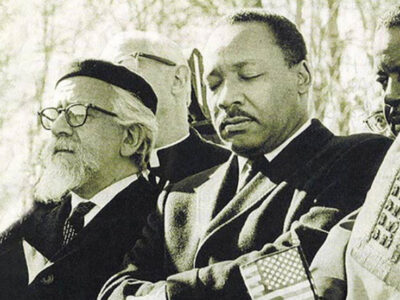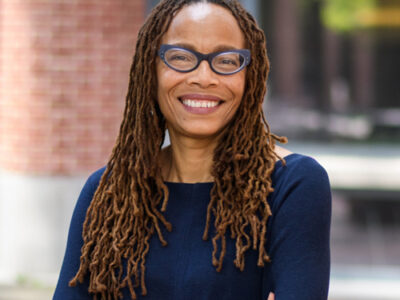Multiculturalism is a Moving Target: The Greenfield Intercultural Center Turns 25
There was a time, not so long ago, when the very idea of a campus facility dedicated to minority-student interests was a controversial one. Back in 1978, student demands for a “Third World Center” were an issue at a sit-in at the Franklin building. Six years later, after a grant from the Albert M. Greenfield Foundation and the backing of then-president Sheldon Hackney Hon’93, Penn’s Greenfield Intercultural Center was born. In an age when campuses were roiled by identity politics, the facility was dedicated to advising minority students and supporting their various organizations.
What a difference a quarter-century makes. The campus and the nation reflect a degree of diversity that would have been hard to imagine in the 1970s: in the country at large, a majority of Americans will identify as something other than white by mid-century. And on campus, new facilities like La Casa Latina, the Pan Asian American Community House, and the Maaku Black Cultural Center now support a variety of specific cultural groups. GIC, in the meantime, has evolved into a center for examining diversity and multiculturalism on campus, in the community, and around the world.
That role was front and center in Re-Imagining America: Dialogues on Change, a symposium to mark GIC’s 25th anniversary. Over two days of conversations in Claudia Cohen Hall, panelists from Penn’s faculty and student body—as well as from often-neglected communities in Appalachia, India, and West Philadelphia—gathered to discuss the emerging realities, and ongoing challenges, of our multicultural future. And though the subject matter ranged from art to education to public health, participants repeatedly focused on places where deep-seated inequality lingers.
A morning panel examining “Art and Change” featured Tracy Broyles of Philadelphia’s SpiralQ puppet group, Philadelphia music educator Ali Richardson, and Hazami Sayed, executive director of Al-Bustan Seeds of Change, which educates local children about Arab culture. In one way or another, all of the participants channel art towards political ends. Sayed’s organization combats negative caricatures of Arabs; Broyles’ puppets are a mainstay of Philadelphia street protests.
But as the conversation veered towards art’s historic role as a force for change, Broyles argued that the very act of making one’s own art—or helping others to do so—is political at a time when so many people passively take in what’s on television. “As a child, I thought art was largely aesthetic,” she said. “Here, it’s about creating a vehicle for a voice that might not be in the major stream.”
Later on, activists including a West Virginia coal employee-turned-environmentalist, an advocate for India’s “untouchable” population of Dalits, and a Penn admissions officer who is a descendant of the Nanticoke Lenni-Lenape Indians of New Jersey discussed inequality and “invisibility” as reflected in populations whose struggles have traditionally been outside the ambit of American campus activism. The panel was moderated by urban-studies professor Andrew Lamas, who argued against being satisfied with the current understanding of equality—one that avoids long-term, uncorrected inequalities of wealth. “Our commitment to equality is within a hierarchy that we don’t critique,” he said.
GIC director Valerie De Cruz says the range of topics and perspectives at the symposium reflects the center’s current role: supporting intercultural dialogues and putting on programs to strengthen “cultural competence skills” on Penn’s campus. De Cruz says the idea is to think about—and enrich—the whole variety of cross-cultural interactions on and around Penn’s campus. “[GIC] was established to showcase minority culture,” De Cruz says. “Now it’s about moving the dialogue to the center. I see ourselves as sort of this incubator.”
But the anniversary has also been a time of nostalgia for the generation of Penn students who came through the center. De Cruz says it’s been marked by alumni events including a New Jersey beach party and a San Francisco barbecue. “It was a wonderful space for me,” says Tracee Thomas C’06, who graduated with degrees in English and Africana Studies and now directs Ase Academy, a Penn-based mentoring program for local high schoolers.
Thomas was on hand to moderate an especially animated afternoon session about education reform in Philadelphia. Her panelists had experienced the topic from all angles: La Casa Latina director Johnny Irizarry serves on Philadelphia’s School Reform Commission; Chris Bower C’05 CGS’07 runs a program that gets University resources to seven local schools that work with Penn; panelist Marc Mannella Gr’06 is the founder of the innovative KIPP Philadelphia Charter School, and College and Nursing senior Sheyla Medina leads a recess program that sends volunteers to a pair of nearby schools.
Though the conversation showed off the complexity that makes education reform such a confounding topic, Bowers called for a “culture of engagement” with local schools. That sort of thing, he said, could make education a vehicle for significant social change. “Think about what education could be besides a place where kids can go from nine to three and learn how to read and write,” he said.
As the second day of panels reached its end, another group of undergrads and recent alums discussed health disparities, both close to campus and farther afield. The panel included College junior Alex Rosenberg, who leads an effort to provide eye screenings in Philadelphia, an endeavor he said was doable for a committed group of undergrads. As glaring as the disparities may be when it comes to healthcare access locally, the worldwide disparities are stunning, said Susie Lee C’97, a program officer with the GAVI alliance, a Gates Foundation-funded group that helps poor countries access immunizations. And, said Lee, the explanation can be found in the same systemic perspective that was an overarching theme of the GIC anniversary symposium.
“Health is really an outcome of a bigger system, a much larger set of determinants,” Lee said. “It’s not just social services and healthcare. It’s housing. It’s whether or not you have food. It’s that way at the global, local, and the community level.”
—Michael Schaffer




